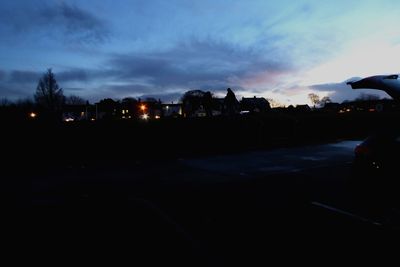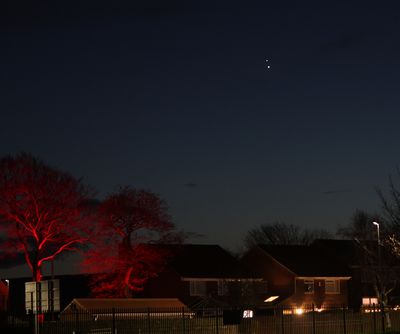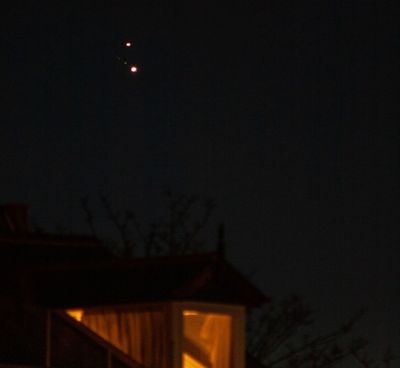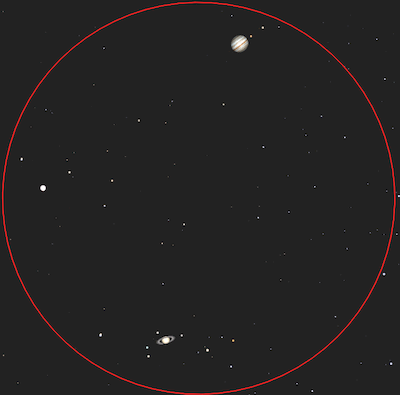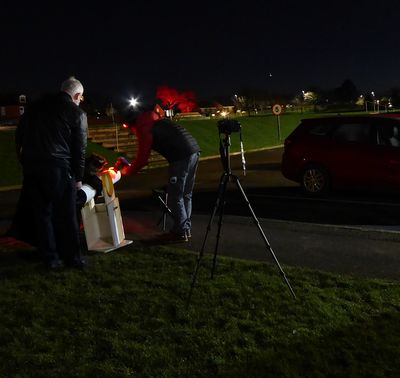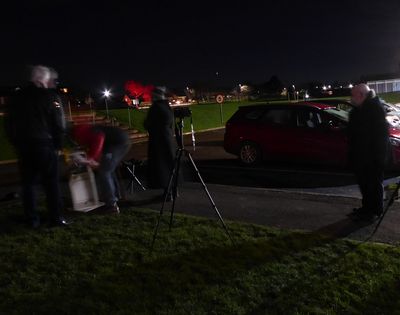In a year that featured a very favourable Mars opposition, perhaps the best in a generation, it would take something pretty special to top the charts of planetary highlights of 2020. December was already half over when finally that event arrived, the great planetary conjunction of Jupiter and Saturn, the closest since the year 1623.
Not surprisingly conjunction week 2020 coincided with yet another spell of rather unsettled weather. However, for the evening of Sunday 20th December, the day before the actual 'conjunction day', a 'window of opportunity' had been forecast, an opportunity too good to squander. Last minute plans were drawn up and several society members met up at the observatory to view proceedings, naturally following covid guidelines.
Mark brought along the 6" dobsonian, Keith and John, camera's, Richard his i-phone and attachment and Barbara and Mark, good fortune. The observatory dome was opened, although as it turned out the Cooke refractor wasn't actually utilised. Time constraints, position of the planets and observational accessibility factors in the observatory, tended to deflect our efforts outside.
The planets sat rather low, just 9-10 degrees above the horizon as twilight deepened and scurrying banks of cloud flirted with them on several occasions before finally melting away. Mark had the 'dob' set up in rapid time and when suddenly Jupiter appeared it was quickly acquired. Inserting a 32mm eyepiece into the scope the view was stunning, Jupiter and Saturn sat well within the same field of view, so much so, the eyepiece was immediately exchanged for a 26mm, then a 21mm, then 18mm and finally 12.5mm. Even at this power (around 110x) both planets fit snugly in the field of view.
Twilight deepens, Jupiter and Saturn low above the SW horizon.
(click for larger image) Image; John Lamb
With the image inverted, Jupiter appeared upper right of Saturn, the rings of which were clearly evident. Jupiter's Galilean moons were strung out; Io and Europa close in to one side with Ganymede and Callisto further out on the other side of Jupiter's disk. Titan was also visible nearby Saturn. The view was breathtaking. Due to their low altitude in the sky it was expected that observations would be compromised by 'wobbly seeing', and so it proved, but actually not to the extent feared. In fleeting moments banding across Jupiter's disk and even the great red spot could be made out. A shadow transit of Io was not apparent however.
photorealistic image of Jupiter - Saturn conjunction on 20th,
Utilizing Starry Night Pro-plus 8
(click for larger image)
On the upper field Keith and John L were trying to capture the event through the camera and video lens. Richard tried aligning the iPhone using the adaptor on the dobsonian, which proved to be rather difficult so the results were not brilliant. Whilst Richard, Barbara and Mark G wrestled with this setup, Mark D took a few snaps of the occasion.
Richard, Barbara and Mark G wrestle with equipment.
Jupiter visible above '5' sign (click for larger image)
The photographic results of the evening may be rather ordinary, but the image of both Jupiter and Saturn so close in the eyepiece will be etched on the mind for a very long time to come. The dice had been rolled and thankfully lady luck had favoured us for once. The following evening cloud prevented any sighting of the planets at all, Tuesday was likewise. It will be another 20 years before Jupiter and Saturn are in conjunction once again, the dawn sky of Nov 5th, but nowhere near as close to 2020, a year that will be remembered for many bad reasons, but for amateur astronomers, at least a couple of good ones.
All images by Mark D unless otherwise stated.
- Log in to post comments

